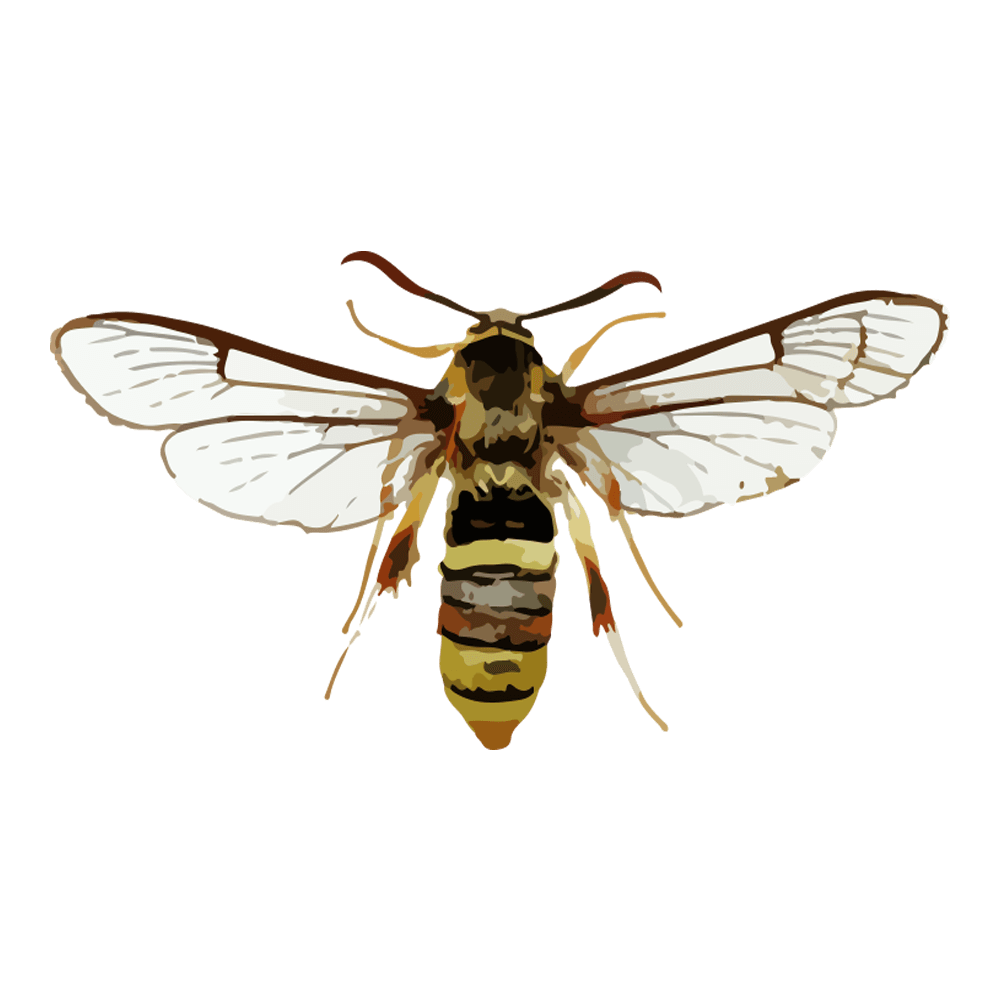


| Latin Name | Paranthrene regalis |
| Common Name | Grape clearwing moth |
| Biology | The grape clearwing moth (Sesiidae family, Lepidoptera) has one annual generation, with mature larvae overwintering in the pith of grape shoots and canes. Pupation occurs from late April to early May the following year, with a ~10-day pupal period; peak adult emergence aligns with grape flowering (early June to early July). Adults are nocturnal with phototaxis, and females lay 40-90 eggs on leaf axils, tender shoots, or bud cracks. Newly hatched larvae bore into tender stems from petiole bases, feeding exclusively on the pith, causing infested areas to swell into tumor-like growths. Brown frass accumulates outside boreholes, making infested shoots prone to breakage and death. Larvae cause the most severe damage from July to August, overwintering as mature individuals from September to October. |
| Damage | This pest primarily damages grapevines, including cultivated varieties such as Sunshine Rose and Kyoho. |
| Distribution Regions | China |
| Monitoring | Pheromone lures mimic natural sex pheromones to attract male insects into specialized traps for population monitoring and suppression. As a core IPM component, monitoring enables early risk detection and targeted control. Mass trapping reduces mating opportunities to curb offspring populations. Protocols: ●Use only with matched traps. ●15-45 traps/hectare,replace/replenish every 4-6 weeks. ●Wear gloves or wash hands with detergent when switching lure types. ●Refer to trap-specific hanging instructions. |
| Recommended Traps | Delta Trap, Wing Trap |

Share your contact information to receive precision-matched pheromone solutions. Should our existing portfolio lack an optimal fit, our synthetic chemistry team will initiate custom development—from molecular structure design to scaled production.